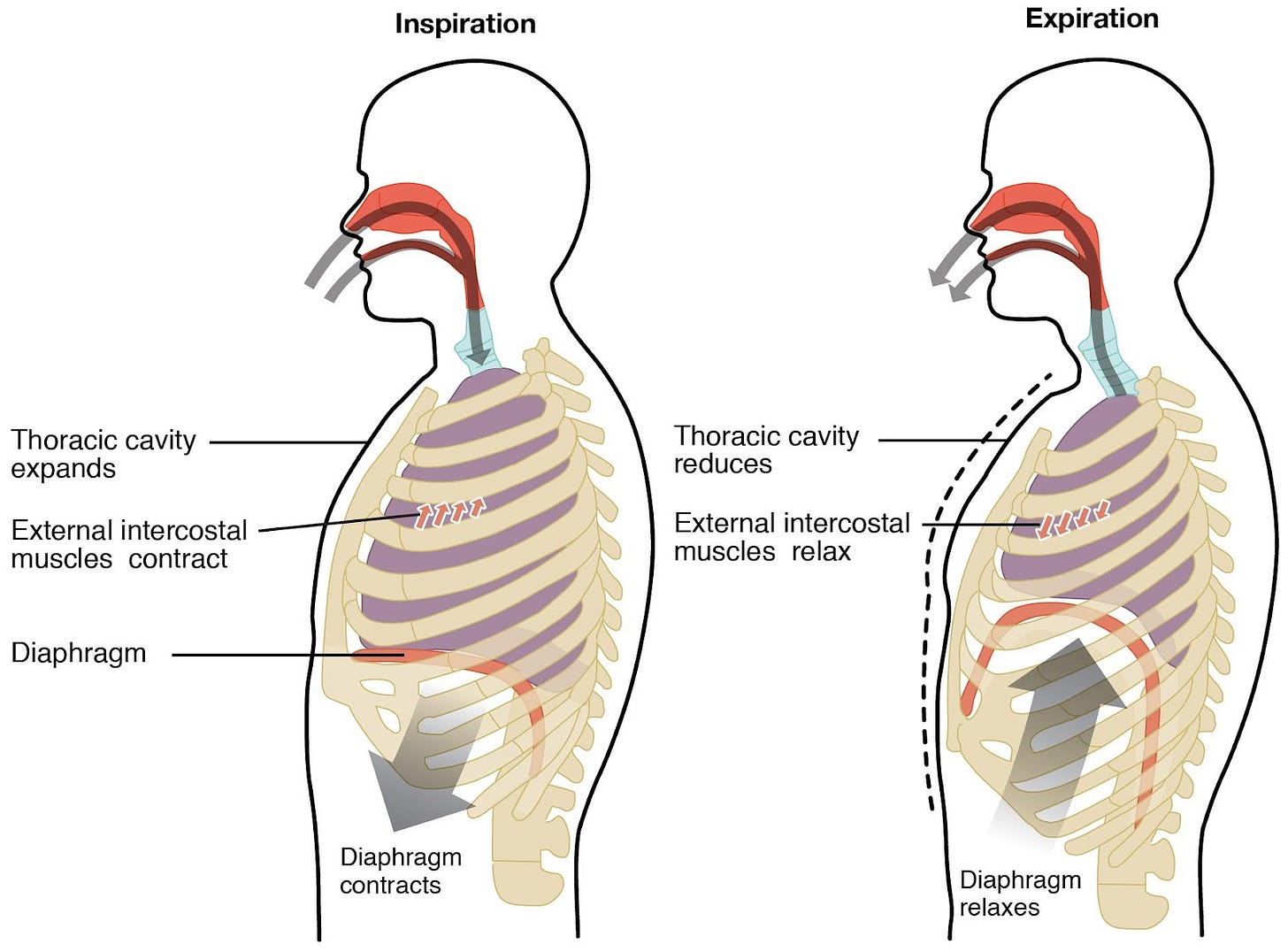Yesterday, a client asked me, “Vanessa, what is so special about singing when it comes to lymphedema?” Last week, I started my new group of STRONG women in our Strength After Breast Cancer Class, and part of the class is to undergo a Lymphedema Education Session. In the video, Dr. Schmitz mentioned that singing helps to increase lymphatic flow. So, how are the two connected? Here’s my theory….
Let's look at the basic anatomy of the abdomen. We have a large muscle called the diaphragm that separates the upper part of the trunk housing our ribs, lungs, and heart with the lower part, housing our digestive system, pelvis, reproductive organs, and urinary (think kidneys and bladder) system. Also in the lower region lives our largest lymph node (the cisterna chyli), the thoracic duct, and its lymphatic trunks responsible for draining 3/4ths of our body. When we breathe (or sing) the diaphragm flattens out from its dome shape to create a vacuum sucking in air to the lungs. As you can see in the picture, the diaphragm will massage that lymph node helping it to “wake up.” When you stimulate this region, you can increase lymphatic processing and flow.
Photo Credit: Google
So when you breathe deeply or sing, your lymphatic system is coaxed into increasing its filtration and processing all the protein-rich fluid and wastes in the body. This deep breathing is also known as Diaphragmatic Breathing or Belly Breathing. If you have taken a yoga class or done a breathing meditation, you probably have also heard of a Cleansing Breath. (See? The yogis are onto something! Deep breathing = lymphatic stimulation = remove toxins via the lymphatic system! So yeah for those gentle yoga classes…)
How to do diaphragmatic breathing for lymphedema:
Position: Find a comfortable position - lie down back with your knees slightly bent, or sit upright with good posture.
Hand placement: Place one or both hands on your abdomen, just below your rib cage. Some like to have one hand on their heart and the other on their belly to direct the air to the lower hand as people (especially those facing chronic stress) tend to only upper chest breathe.
Inhale: Breathe in slowly through your nose, allowing your belly to expand downwards and outwards as your diaphragm contracts and flattens. You can count slowly to 4 if you like.
Exhale: Breathe out slowly through your mouth, gently allowing the diaphragm to relax and return to its dome-shaped position. You can count slowly to 4, 5, or even 6 to ensure you get all that stale breath out of your lungs.
Some Key points to remember:
Focus on your belly movement: Pay attention to the rise and fall of your abdomen with each breath, ensuring your chest remains relatively still. Think that your belly is like a big balloon. 🎈
Slow and controlled breaths: Take deep, slow breaths, avoiding rapid or shallow breathing. You might get a little lightheaded or feel very relaxed. Stop if this causes anxiety or you have any other unsafe symptoms. Fun Fact: Your Vagus Nerve lives next to your cisterna chyli which helps to regulate your sympathetic (fight or flight) and parasympathetic (rest, digest, and heal) system, so you get double the benefit.
Repeat regularly: Practice diaphragmatic breathing several times a day, for a few minutes at a time.
So, the diaphragmatic breathing:
Improves lymphatic drainage: Engaging the diaphragm, helps to gently massage the lymphatic vessels, promoting fluid movement.
Reduces lymphatic swelling: Regular practice can lead to a reduction in swelling in affected areas.
Provides stress relief: Deep breathing can also have a calming effect, which is beneficial for managing stress (that vagus nerve!)
As always with all of my posts please remember to:
Before starting any new exercise, especially if you have lymphedema, consult with your doctor or a physical therapist to ensure it is appropriate for you and to learn the proper technique.
You may require tailored breathing exercises based on your specific needs and affected areas.






